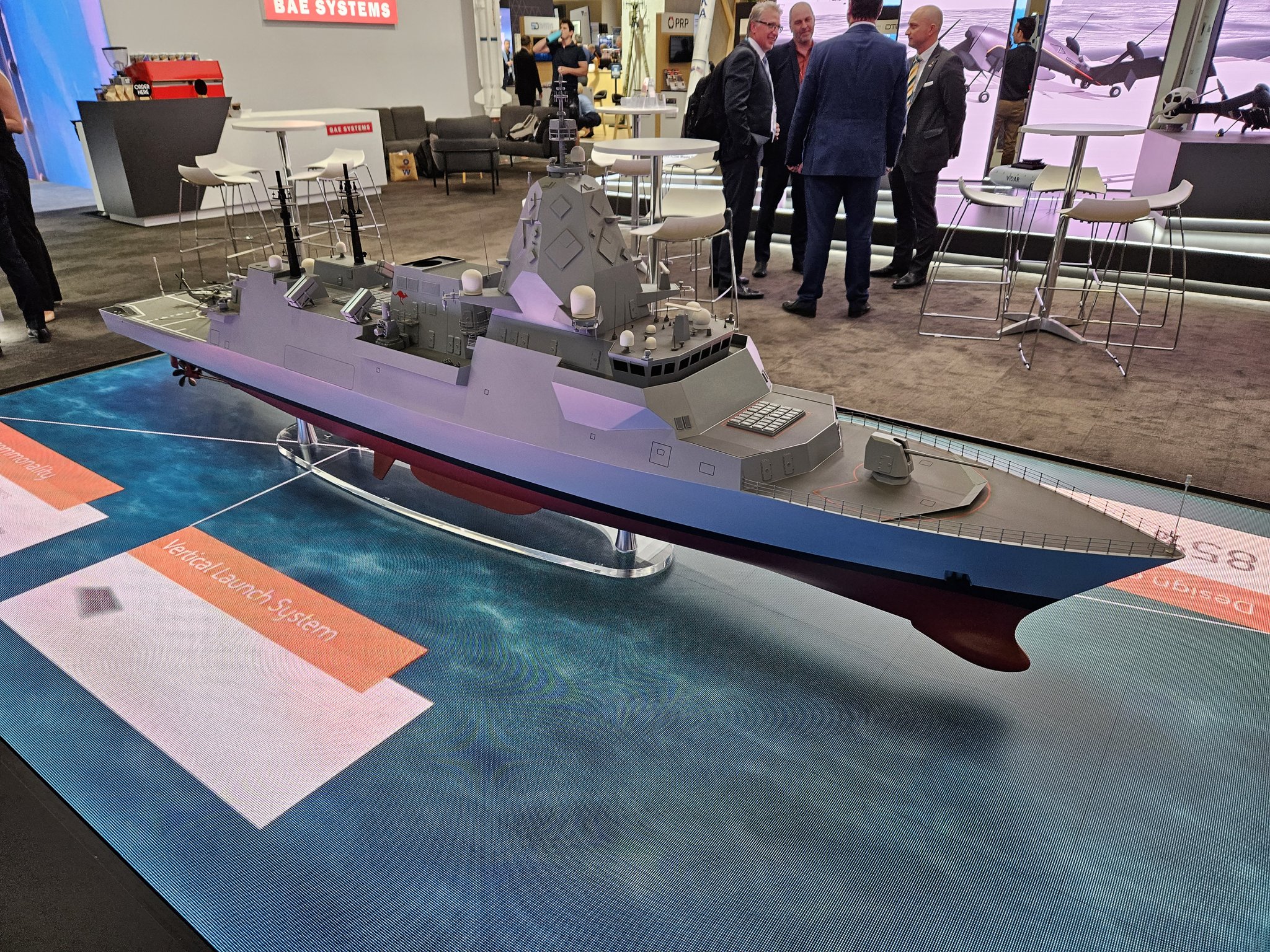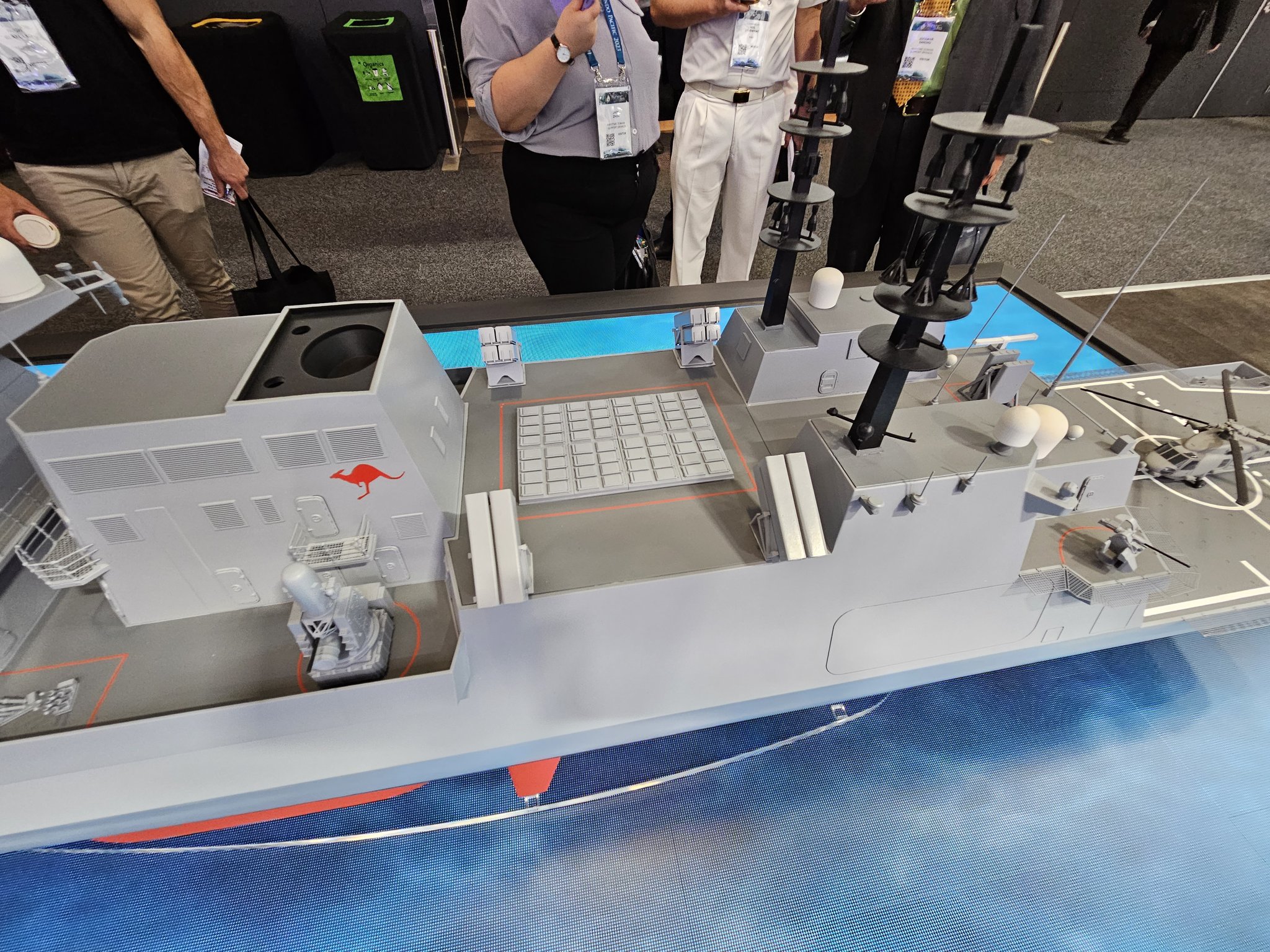Have you seen that mockup? I didnt see the how mentioned in the article
Also potential CAMM growth options?
It would make zero sense for Canada to be interested in either the CAMM-MR or the CAMM-ER considering CSC already is slated to have ESSM Block II and SM-2 Block III-C. These two missiles match or exceed the proposed capabilities of MR and ER CAMM, making them redundant. They also cannot fit in the ExLS cells, eating up more valuable room in the main VLS array.
So, at a recent briefing on CSC they said that they (the project) and the Navy writ large recognize that 24 VLS cells is NOT enough, but that there is no more room, so if we want more cells, something has to go...
The ship is 8000 tons and is expected to be up to 9000 tons by end of life (when new and emerging systems come on line). It has bunks for only 210 officers and crew, and has only 1 Gas Turbine engine.
Conversely, the Arleigh Burke Flight I and II weight around 8300 tons, have 4 x Gas Turbine engines, and bunking 300+officers and crew, yet they can fit in 90 VLS cells...
So what is it that's aboard a CSC that is taking up all that extra room that we can, right now, put on more cells?
CSC has a multi-mission bay which is roughly 15m long and 20m wide amidships, this bay can accept up to 10 20ft shipping containers, another helicopter, additional boats or whatever else you can fit aboard. It also has its own gantry crane system for independently onloading and offloading cargo out of large roll-up shutter doors on the ships sides. This bay can take up to 150 tons of equipment inside in total, the weight and space put aside in the design to accommodate this is substantial.
CSC's flight deck is rated for a Chinook and is significantly larger than the flight deck on a Burke.
(CSC flight deck = 30m long and 20m wide)
(Burke flight deck = 14.6m long and 15.6m - 13.16m wide)
CSC has extensive measures put into the design to make the design very quiet for anti-submarine warfare duties. This includes things like specially designed internal pipework, inherently quiet/smoothly operating machinery, shaping the hull form, adding sound proofing, more rafting around equipment, etc to mitigate noise and vibrations across the entire ship. All of these measures are weight and space intensive to a point compared to a less technologically advanced or specialized combatant like a Burke.
CSC's crew accommodations are far more spacious and of higher quality compared to the older and more cramped Burke design.
That's what I could think of off the top of my head.
What happens when you run out of ESSMs and the only reloads available locally in the Baltic are CAMMs? Or KM-SAMs? The Ukrainians seem to be happy to launch anything that they can find.
Isn't interoperability a thing?
It is not feasible to mimic Ukraine and their land based systems in peacetime with naval VLS. You need to properly pay for systems integration and testing, which nations generally won't do out of their own pocket for a system they are not operating. Redundant weapons systems are deadweight that should be avoided. It makes far more sense generally for Canada to operate US missile systems considering our proximity to them overland, in comparison to trying to resupply across an ocean especially in a wartime scenario. ESSM also has a larger customer base (Australia, Canada, Denmark, Germany, Greece, Netherlands, Norway, Spain, Turkey, USA, Belgium, Chile, Finland, Japan, Mexico, Portugal, Thailand and the UAE) compared to CAMM (Chile, UK, NZ, Poland, Pakistan, Brazil, Canada, Italy and Saudi Arabia.) Be interoperable using systems that are worthwhile.



